Rice and Ruin: The Hinoe Island treat!
I wasn’t expecting to learn anything from Sakuna: Of Rice and Ruin. I’ve mentioned a couple of times here that I tried out the game at E3 2019, and generally enjoyed the fluid combat and wonderful artwork. The final release brought us that, but it also brought quite a bit more.
This is because Sakuna isn’t content to simply toss you into 2D, side-scrolling battles. Yes, there are countless areas to explore, combat moves to master, and monsters to defeat.
I’ll get to all of that in a moment, but I first want to cover something else. The rice.
Actually, let’s first talk about Sakuna herself. She’s a brat. A completely unlikable brat. I found it difficult to even listen to her, and I quickly searched for a Japanese language option just to see if I could switch to a less annoying voice. But it’s all by design. Sakuna is a selfish, spoiled god, you see. Even when she saves wayward travellers crossing the bridge into the Lofty Realm of the gods, it’s for selfish purposes. And when she tries to prevent those travellers from getting into trouble, she gets into trouble herself. This leads to all of them being banished to Hinoe Island, also known as the Isle of Demons.
Sakuna has to make the island her home. She is forced not only to explore and drive out the demons, but to also make the island sustainable. This requires farming, and it requires the help of the four travellers she saved. The trouble is that she can’t stand them.
It doesn’t help that the others can’t fight, leaving Sakuna to handle the demon clean-up. This is done by visiting various locations that slowly open across the map. The locations (forests, caves, etc.) are laid out on a 2D scrolling plain. Sakunaruns into various monsters as she explores, and she has nothing but farming implements and her magical scarf to fight them.
The farming tools are used for your typical quick and heavy attacks, and various combos are revealed as you progress through the game. It’s standard stuff, but the implementation here is very fluid and precise. The scarf is used for Raiment Skills, which are also unlocked as you progress. This includes the ability to flip past enemies, to grab them and pull them towards you, etc. There are a lot of moves to learn and utilize, but they’re introduced slowly, giving you time to master them as you work through the game.
There’s even a training area to help out if you’re having trouble.
The scarf is also used for exploration, allowing you to reach higher areas or hold onto walls for better positioning against enemies. Of course, the standard weapons are upgradable, too. Defeating enemies and mining materials between fights yields items that you can use to craft better weapons and enhance the ones you have when you return to the village.
Sakuna, on the other hand, levels herself up through food and farming. Central to this is the rice paddy, which she must learn to use properly. The game is split into seasons, during which Sakuna must fertilize the paddy, plant the rice, keep it properly watered depending upon the temperature, protect it from bugs and weeds, and then harvest it.
The game does little to teach you about the process, with only ambiguous advice from one of the travellers to get you started. This is stressful, but the process is eased as the seasons pass by. For instance, a grid is eventually provided to help you better space the rice when planting.
The connection with food and the land doesn’t end there. Each day ends with a dinner, during which you can cook up the ingredients you’ve acquired throughout the game. Food spoils, so you must either use it quickly or process it for later use. Different recipes are slowly provided, and what you make and serve affects Sakura’s abilities the next day. Having trouble beating a boss? Cook up the right dinner for the power-ups you need to achieve victory.
In other words, the farming sim isn’t just a mini-game; it’s as important to the overall experience as exploration and combat. Learning to farm and properly use your crops is key to advancing. It also creates a nice cycle of rather intense combat and relaxing farming. Not in a fighting mood? Just spend the day pulling weeds, catching bugs, or mixing fertilizer instead of rushing off to some dungeon. If you are going demon hunting, you can assign your villagers to explore or tend to the fields.
There are, however, periods where it’s not obvious how to best utilize your day. You’re given goals to reach in each combat area, but you’re not told whether you’re ready to handle them. There were also times when the game is not clear on exactly what has to be done in order to unlock the next location. Some better guidance on the map would’ve been helpful, especially considering the stress of harvesting the crop before winter sets in.
The seasons aren’t the only change you have to consider. When exploring the caves, the enemies become much stronger at night. Often unbeatable. This forces you back home around dusk. If you’re not done clearing out the location, you’ll have to return the next day. Thankfully, there are waypoints that can be activated so you don’t have to start at the beginning each time.
Regardless of the time of day or whether you’re farming or fighting, the artwork presents a colorful, unique look that fits in perfectly. Switching between 2D combat and 3D farming could’ve been problematic with a different visual approach, but the colorful, cell-shaded visuals effectively tie the two together.
I mentioned earlier that Sakuna: Of Rice and Ruin taught me some things, and that’s true. I learned about historical farming methods. I learned why people tend to sing while we work. I even learned that if my kids are being brats, it’s not a bad idea to put them to work in a garden or to have them fight some wolves or something (anything to get them outside, I guess).
Most importantly, however, I learned that some games are worth the wait, and that they still have the ability to surprise.
Review: Sakuna: Of Rice and Ruin (Nintendo Switch)
Great
Sakuna: Of Rice and Ruin is a combination 2D side-scrolling combat game and 3D farming sim, and both elements are strong enough to stand on their own. You’ll need to master each to be successful, and you’ll have a fun time on both sides once you figure them out.

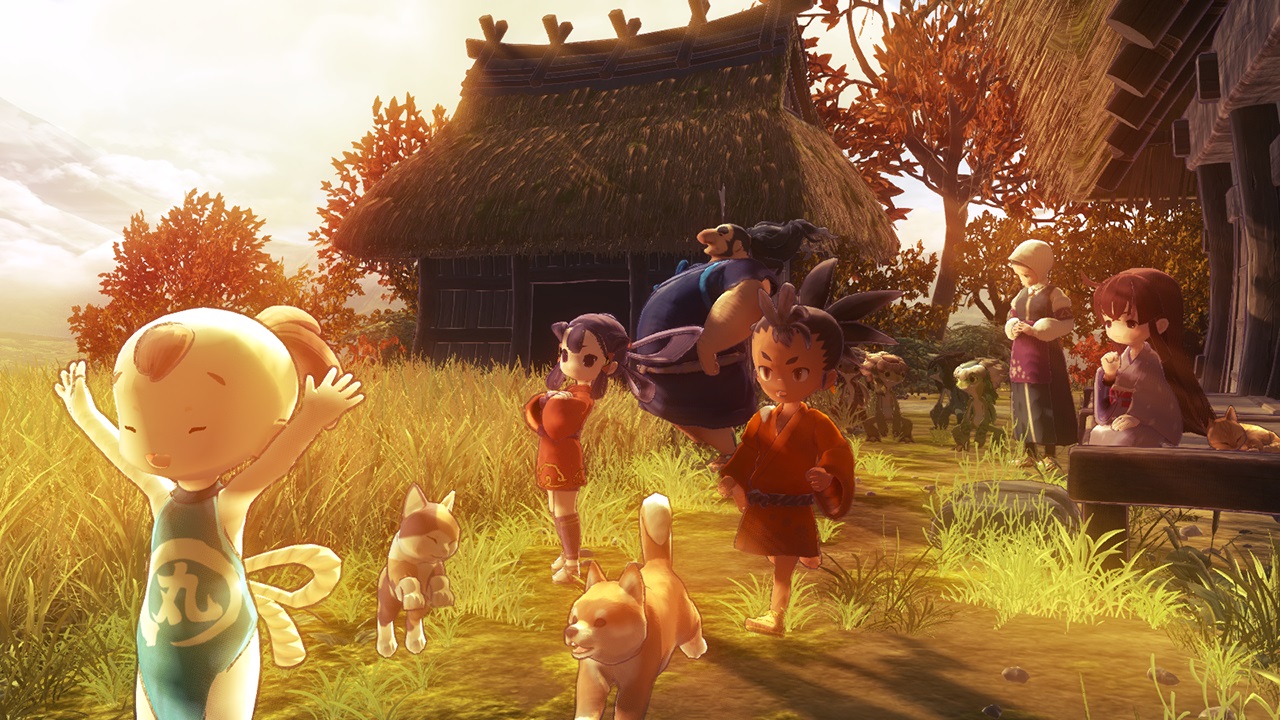
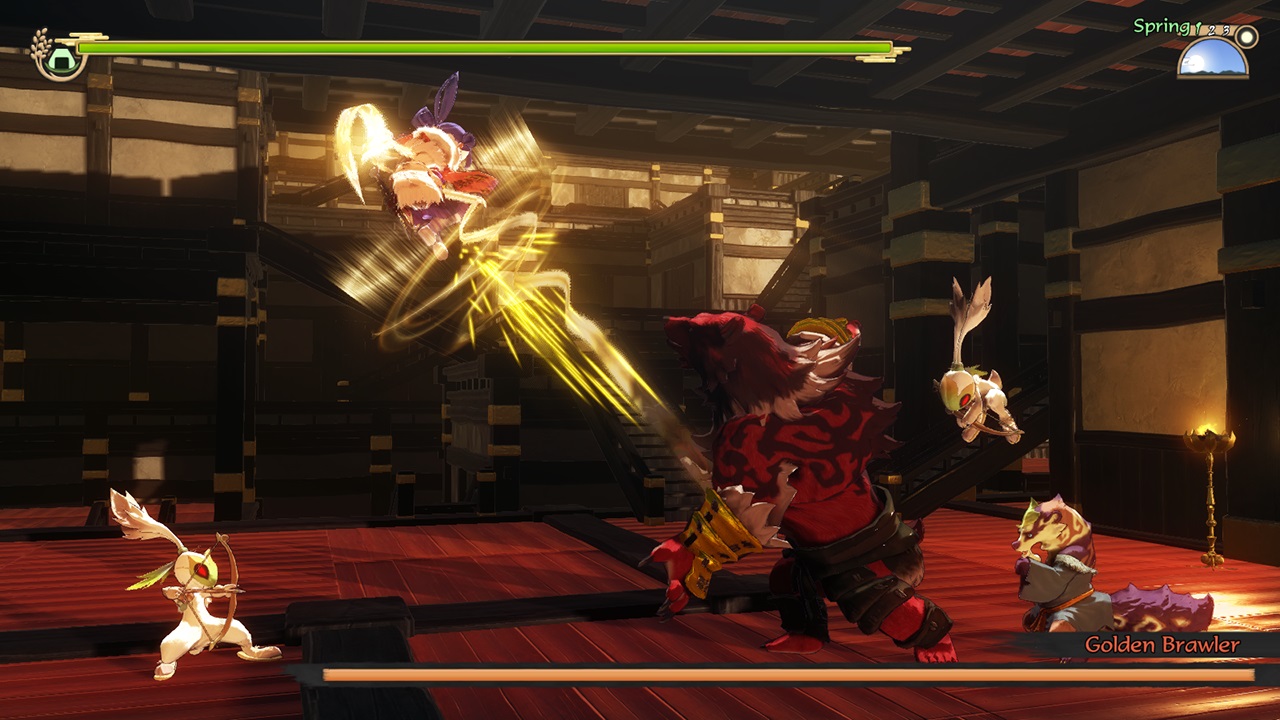
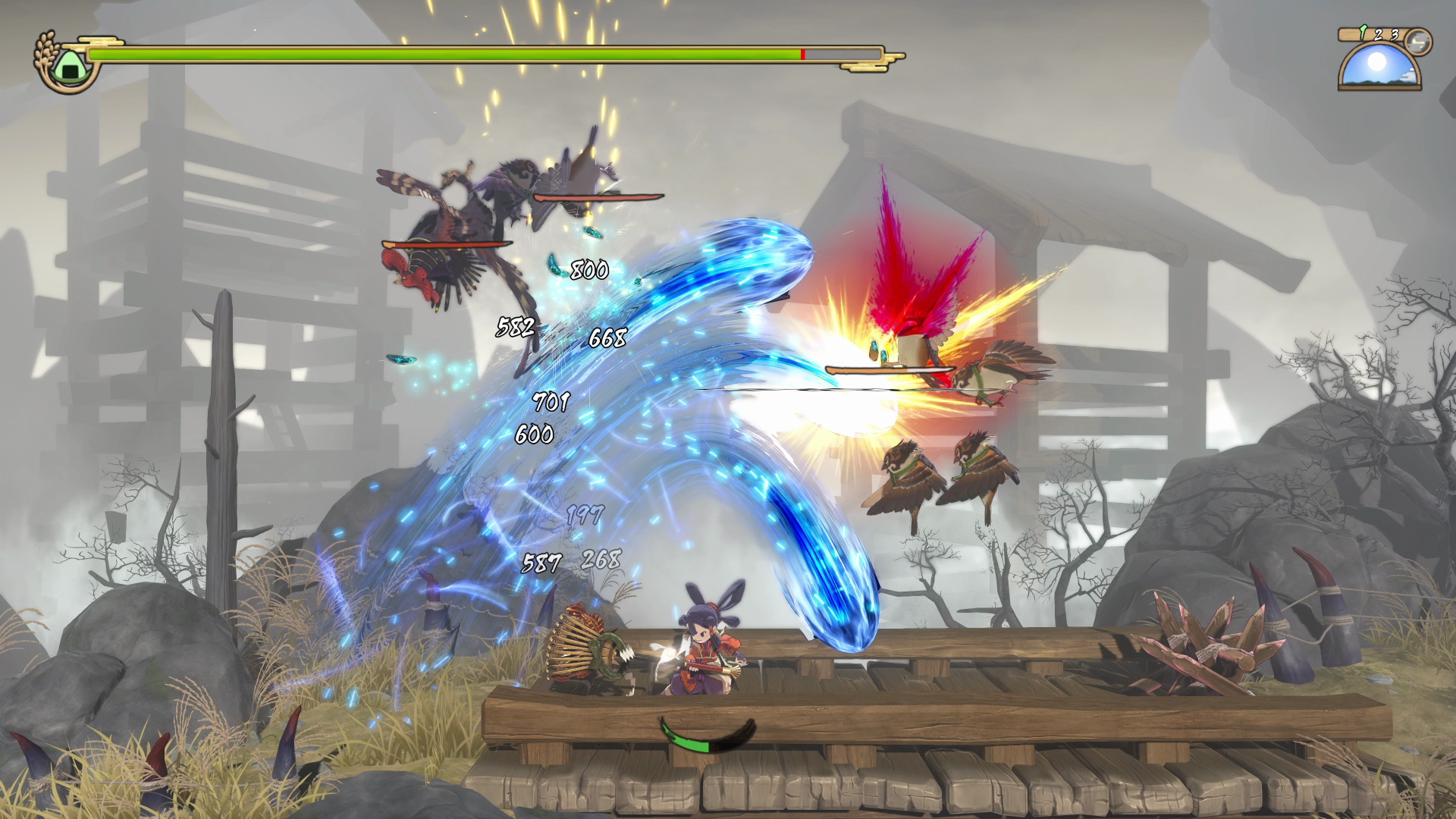


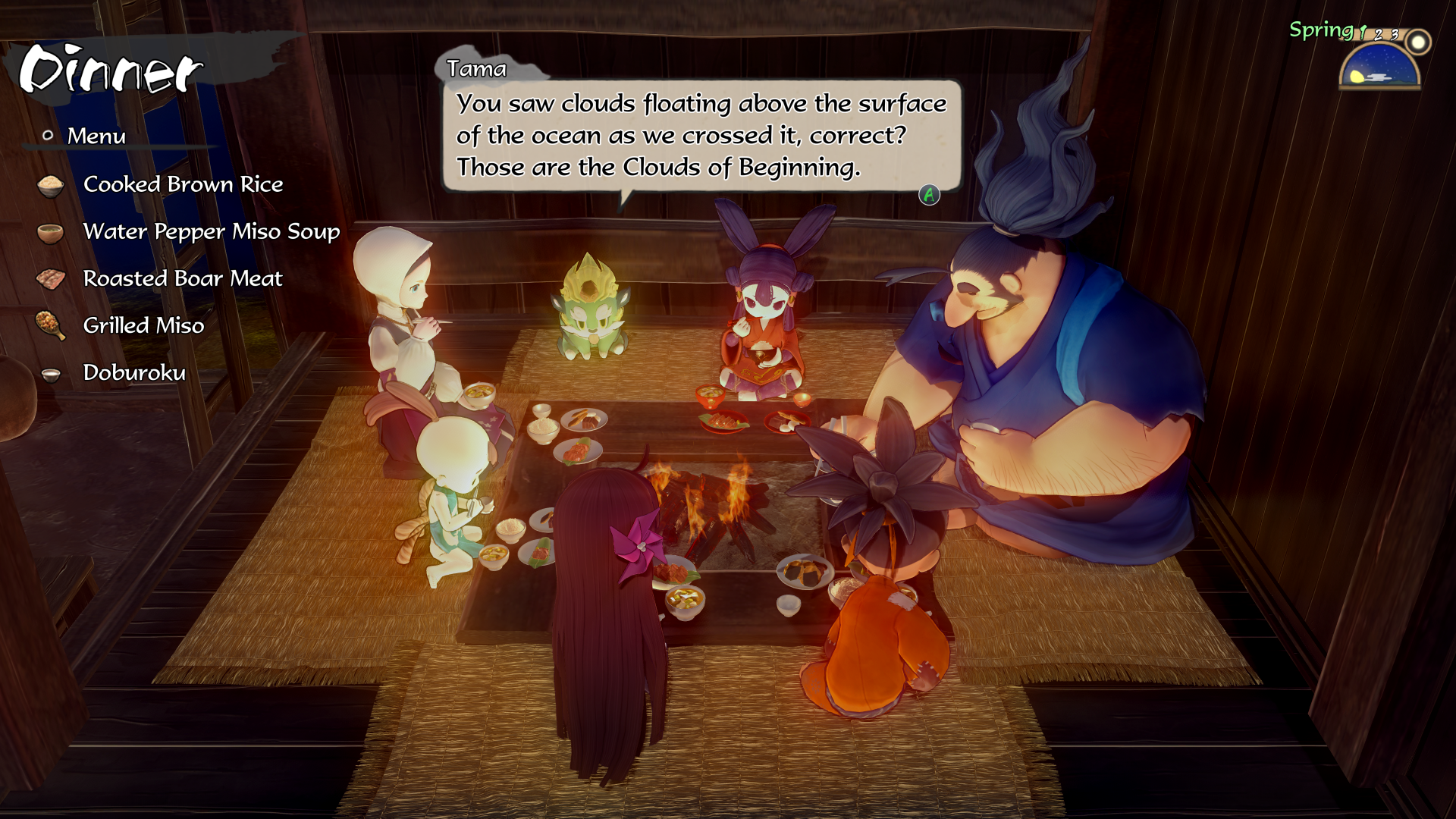
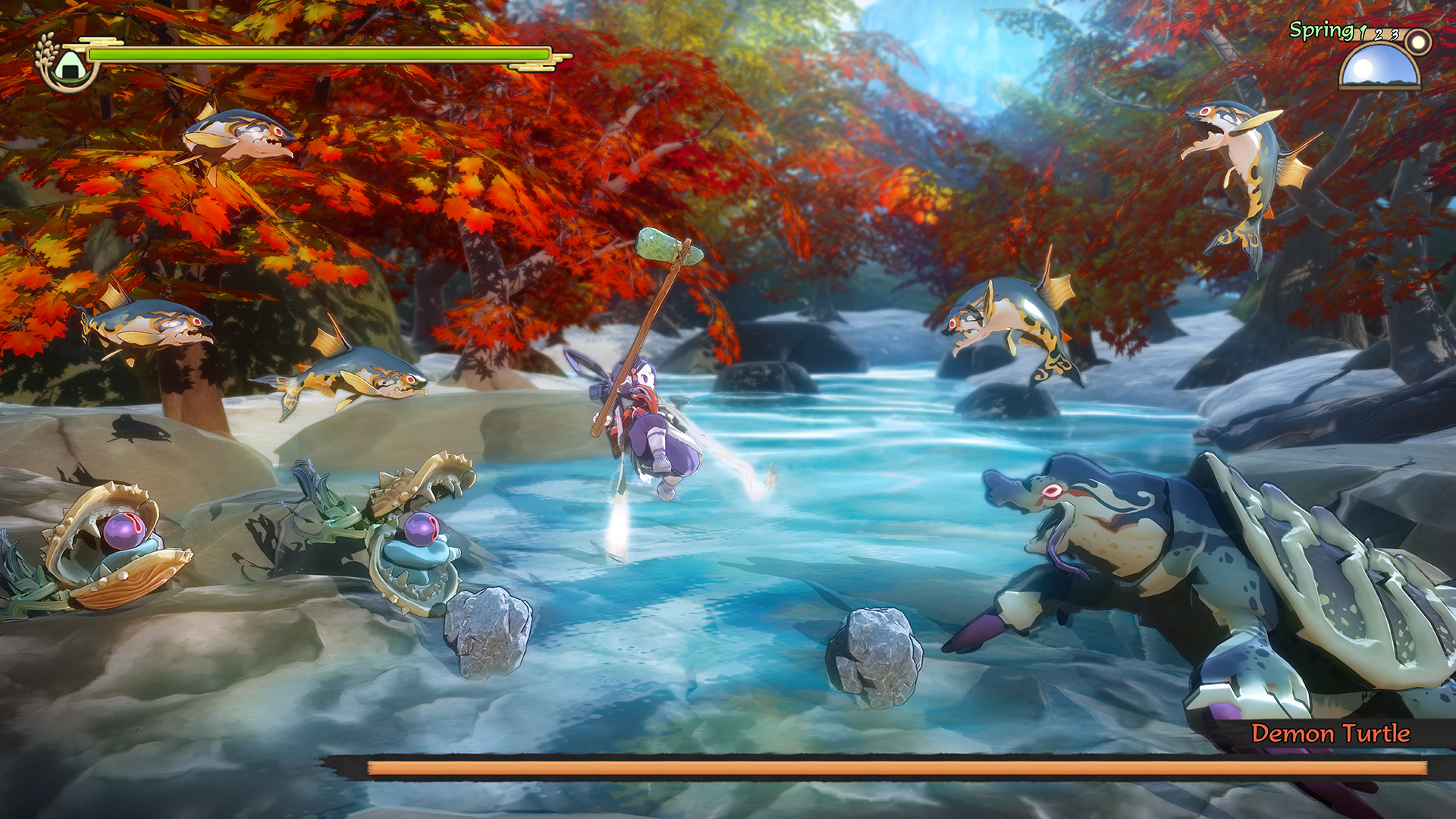

December 12, 2020
[…] post Review: Sakuna: Of Rice and Ruin (Nintendo Switch) appeared first on Pure […]